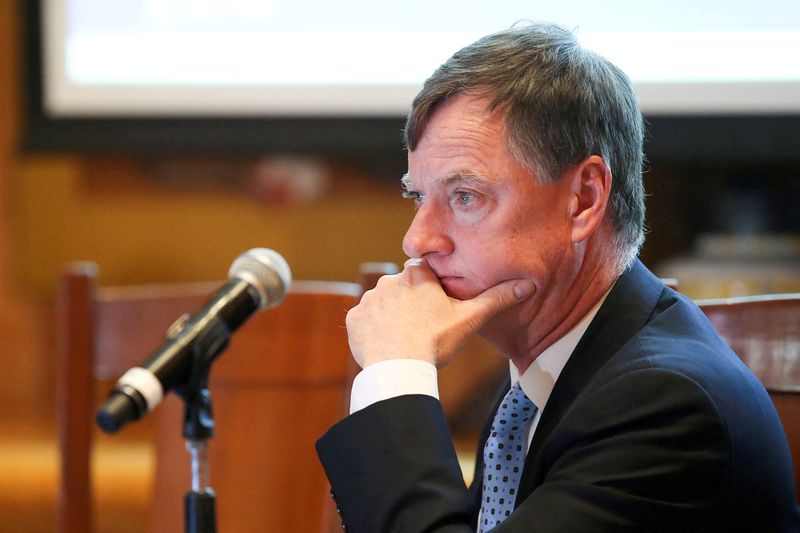By Ann Saphir
(Reuters) -Wednesday's consumer price index report showing U.S. inflation didn't accelerate in July was the first "positive" reading on price pressures since the Federal Reserve began tightening policy, Chicago Fed President Charles Evans said, even as he signaled he believes the Fed has plenty more work to do.
With consumer prices unchanged last month compared to June, but up 8.5% from a year earlier, inflation is still "unacceptably" high, and the Fed will likely need to lift its policy rate, currently in the 2.25%-2.5% range, to 3.25%-3.5% this year and to 3.75%-4% by the end of next year, Evans said.
The remarks suggest Evans, among the 19 central bankers who set U.S. monetary policy, expects to soon slow what's been the Fed's steepest round of interest-rate hikes in decades. Though he was not explicit on whether he would support a downshift as soon as next month, the Fed would only need to raise rates a percentage point over the course of the next four months to reach his forecasted year-end rate.
That would be half the pace of rate hikes over the last four months.
At the same time, his expectation that rates will top out at 4% next year suggest he is more hawkish than financial markets, which are pricing a top fed funds rate of 3.75% to be reached mid-2023, with rate cuts to follow.
"I feel like we're in a good place and we can pivot to be more restrictive if inflation gets out of hand more than what I'm thinking about," Evans said at an event at Drake University in Des Moines, Iowa. "But also, if things get better more quickly, we can not raise rates quite as much as I've just indicated ... I think we're well-positioned now for a couple of different turns of the data over the next few months."
Evans said he expects inflation to be closer to 2.5% next year by the Fed's preferred measure, the personal consumption expenditures price index, though still above the Fed's 2% target for inflation.
Since March, the Fed has raised its benchmark policy rate 2.25 percentage points, including two back-to-back increases of three-quarters-of-a-percentage point at its June and July meetings.
A report last week showing employers added more than half a million jobs in July - far more than expected - fueled market anticipation for a third straight 75-basis point increase in September to head off what could be renewed inflationary pressures from a tight labor market.
After Wednesday's CPI report showed inflation cooling instead, traders switched to betting on a half-point hike for September.

Evans on Wednesday said he did not think the recent jobs report necessarily pointed to more inflation, "but we need more data on that."
And he'll get it: the Fed will have one more monthly reading on the U.S. labor market before its September meeting, and several different measures of inflation.